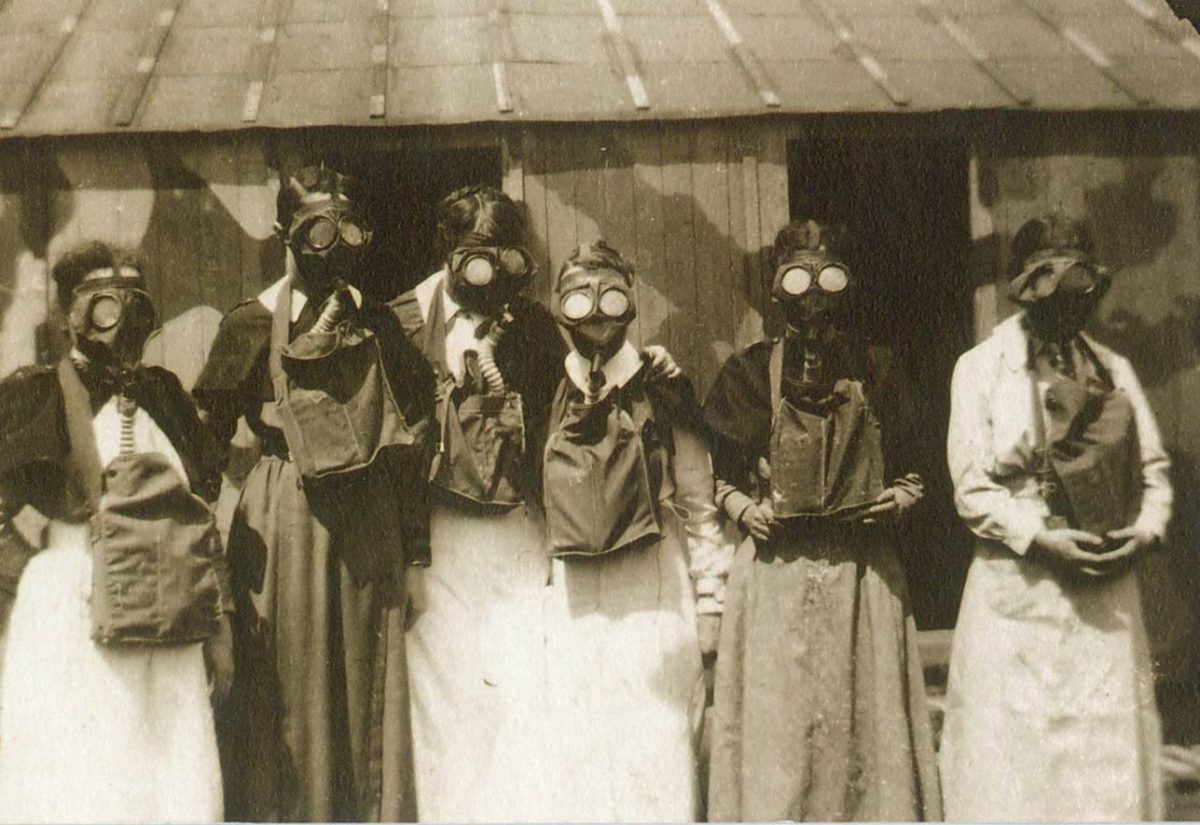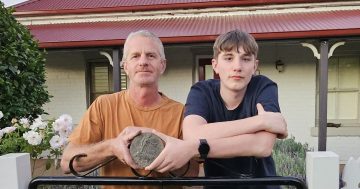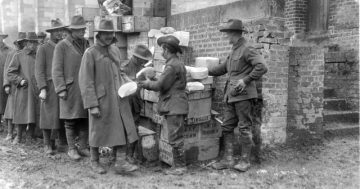
Nurses, including Wagga-born Annie Cameron, preparing for a gas attack on the Western Front, 1916 – 1918. Photo: Museum of the Riverina.
With Anzac Day on the way, we’re looking back to remember some of those who served, including Wagga-born nurse Annie Cameron.
Ms Cameron is one of the brave women in this disturbing photo that featured in the Museum of the Riverina’s centenary exhibition, War Changed Wagga, in April 2017.
The daughter of Scottish migrants and well-known Wagga pioneers, Duncan and Flora Cameron, Annie was one of almost 3000 Australian nurses who served in the Australian Army Nursing Service (AANS) during World War I.
To join the AANS, a woman had to be aged between 25 and 40 and unmarried.
Nurses’ wages were around half what male soldiers were paid and they often needed to be supported by their families while they were serving overseas.
AANS members served in Egypt, Belgium, England, France, Greece and India, working in Allied hospitals, on board hospital ships and trains and in casualty clearing stations close to the front line.
The Western Front was an almost unimaginable centre of carnage, with more than 80 per cent of Australian WWI battle casualties being inflicted there.
To cope with the flood of wounded soldiers, they would evacuate them from the battlefield, often very slowly, and deliver them into the care of nurses at a casualty clearing station, usually several kilometres from the front.
It was often dangerous and difficult work and eight AANS nurses received the Military Medal for bravery, while 25 died during their service.,
Lieutenant Harold Williams was cared for in a casualty clearing station at Daours in France in 1918 and was full of praise for the AANS.
“In large marquees, nurses, pale and weary beyond words, hurried about. That these women worked their long hours among such surroundings without collapsing spoke volumes for their will-power and sense of duty,” he recalled.
“The place reeked with the odours of blood, antiseptic dressings, and unwashed bodies … They saw soldiers in their most pitiful state — wounded, blood-stained, dirty, reeking of blood and filth.”
There is a diary in the Australian War Museum Collection belonging to Staff Nurse Annie Catherine Cameron.
She embarked from Melbourne aboard RMS Mooltan on 18 May, 1915. While she is listed as a resident of Launceston, Tasmania, her parents’ address is ”Mundowey”, Wagga Wagga.
The diary describes life in a casualty clearing station and tells of the joys, challenges and heartbreak of the Western Front, including an evacuation as the medical staff came under attack.
“Hun planes came over every night dropping bombs very near us. On one occasion killing one medical officer and a batman [personal servant],” she wrote.
“Our tents were riddled with pieces of shrapnel. The sisters, at this time, being all on duty.
“A week later our camp was shelled. The first shell killed an English Sister at 44 C.C.S quite near us.
“Orders were then given to evacuate all patients by ambulances as quickly as possible. This was done in a very short time. The orderlies were simply wonderful the way they worked doing everything possible for the patients who were all very badly wounded.
“The Sisters were sent to trenches nearby & later taken away by Ambulance to St. Omers & later returned to No. 1 Australian General Hospital Rouen where I stayed until December 17th 1918.”
Nurses remained in France until the end of hostilities and continued to care for the men in hospitals after the war, and on troopships back to Australia.
Annie Cameron, now promoted to Sister, returned to Tasmania, where she became matron of Scotsdale Hospital, caring for returned soldiers.
However, it seemed that the war took its toll and a passing mention is made of Sister Cameron in her mother’s obituary in Wagga’s The Daily Express in February 1924.
“Miss Annie Cameron, who is an inmate of the Prince of Wales Military Hospital, at Randwick (Sydney), as the result of injuries sustained while serving as a nurse in the war.”
Lest we forget.









